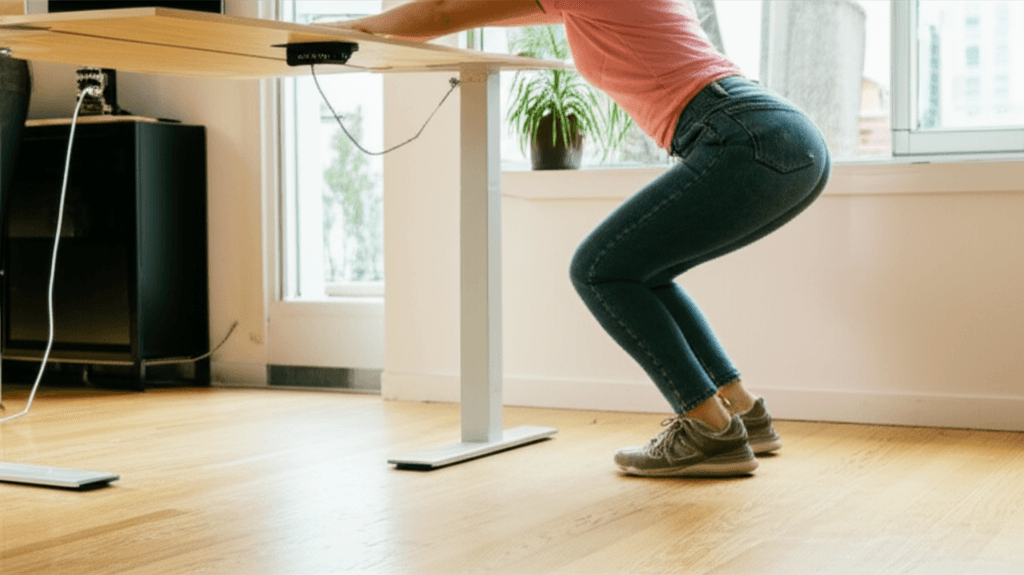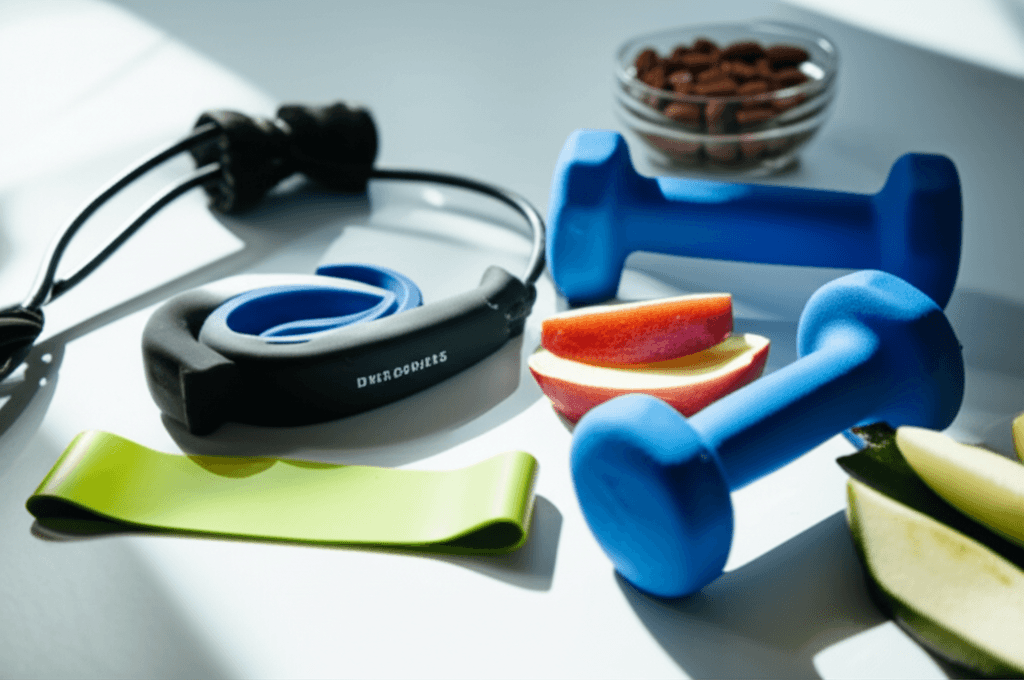Feeling like a full gym session is an insurmountable mountain? The good news is that achieving meaningful fitness gains might be as simple as incorporating “exercise snacks” into your daily routine. Recent research indicates that these short, vigorous bursts of physical activity can significantly boost cardiorespiratory fitness in adults who struggle to meet traditional exercise guidelines, offering a practical and highly adhesive solution to combat sedentary lifestyles.

What Are Exercise Snacks?
“Exercise snacks,” also known as activity snacks or exercise micro-dosing, are defined as brief periods of intense physical activity, typically lasting anywhere from 30 seconds to five minutes, performed throughout the day. Unlike traditional longer workouts, the key characteristic of exercise snacking is the extended rest periods between these short bouts. The aim is to elevate your heart rate and exert yourself, even for a very short duration.
These mini-workouts don’t require special equipment or a gym membership, making them accessible and easy to implement. They are designed to be woven into the fabric of your day, challenging the perception that effective exercise demands dedicated, lengthy blocks of time.

The Science Behind the “Snack” — A Promising Study
The concept of exercise snacks has gained significant scientific backing. A comprehensive meta-analysis published in the British Journal of Sports Medicine synthesized findings from 11 randomized controlled trials, involving 414 sedentary or physically inactive adults. The aim was to evaluate the impact of these short bursts of activity on various health markers.
Key Findings of the Meta-Analysis
The review revealed several compelling conclusions:
- Improved Cardiorespiratory Fitness: Exercise snacks significantly improved cardiorespiratory fitness in physically inactive adults. This benefit was observed with moderate certainty of evidence, suggesting a reliable effect.
- Muscular Endurance Boost for Older Adults: For older adults (aged 69-74), the same approach led to improvements in muscular endurance, though the evidence for this was more limited.
- High Adherence and Feasibility: Participants demonstrated remarkably high compliance, averaging 91.1%, and adherence rates in unsupervised settings reached 82.8%. This indicates that exercise snacks are a highly feasible and acceptable approach for many individuals, potentially overcoming common barriers like perceived lack of time and low motivation.
- Efficiency Over Volume: Notably, these fitness gains were achieved even when the total weekly exercise volume was substantially lower (ranging from approximately 4.5 to 67.5 minutes per week) than the widely recommended physical activity guidelines (150 minutes of moderate-intensity or 75-150 minutes of vigorous-intensity activity per week).
- Limited Impact on Other Markers: While cardiorespiratory fitness showed clear improvement, the meta-analysis found no significant effects on lower limb muscular strength or other cardiometabolic outcomes such as body composition, blood pressure, or blood lipid profiles. Researchers noted the overall evidence for these other benefits as limited, partly due to the small number and varied design of the included studies.

Why Exercise Snacks Work for Inactive Individuals
The effectiveness of exercise snacks stems from several factors, particularly for those who find it challenging to commit to longer workouts:
Breaking the Sedentary Cycle
Prolonged sitting is linked to higher risks of cardiovascular disease, diabetes, and certain cancers. Exercise snacks actively break up these sedentary periods, mitigating some of the associated health risks.
Overcoming Barriers to Exercise
One of the biggest obstacles to regular physical activity is a perceived lack of time and low motivation. Exercise snacks provide a flexible, time-efficient alternative that can be integrated without significant disruption to daily routines. This “something is better than nothing” approach empowers individuals to start and stay consistent.
Physiological Adaptations
Even short bursts of vigorous activity can stimulate favorable physiological adaptations. The quick elevation of heart rate and engagement of muscles, even for a minute or two, can improve cardiorespiratory function over time. Studies have also shown that exercise snacks can help regulate blood sugar levels, especially when performed before meals.

How to Incorporate “Exercise Snacks” into Your Day
Integrating exercise snacks is simpler than you might think. The key is consistency and finding opportunities to move vigorously throughout your day.
Practical Examples of Exercise Snacks
- Stair Climbing: Take the stairs instead of the elevator or escalator. Challenge yourself to ascend quickly for 1-2 minutes.
- Bodyweight Exercises: Perform a quick set of squats, push-ups (on knees or against a wall if needed), lunges, or jumping jacks.
- Brisk Walking: Step outside for a brisk 2-5 minute walk around the block, or park further away from your destination.
- Jogging on the Spot: If space is limited, jog in place for a minute or two, elevating your knees.
- Dancing: Put on your favorite song and dance vigorously for its duration.
- Household Items as Weights: Lift heavy books or filled milk jugs for a quick strength burst.
Weaving Them into Your Routine
- Transition Points: Use natural breaks in your day, such as waiting for coffee to brew, during commercial breaks, or between work tasks.
- Post-Meal Activity: A short walk or a few bodyweight exercises after meals can help with blood sugar control.
- Set Reminders: If you work a desk job, set an alarm to remind yourself to take a 1-2 minute movement break every hour or two.
- “Reverse Commute”: If working from home, take a brisk walk at the start and end of your workday.

Beyond Physical Fitness: Other Benefits
While the primary study focused on cardiorespiratory fitness, other research and expert opinions highlight additional advantages of exercise snacking:
- Enhanced Energy and Focus: Breaking up sedentary time with movement can combat the sluggishness often associated with prolonged sitting, leading to increased alertness and productivity.
- Improved Mood: Physical activity, even in short bursts, can positively impact mental well-being and reduce fatigue.
- Accessibility and Inclusivity: Exercise snacks offer a low-barrier entry point to physical activity, not requiring specialized equipment, gym memberships, or a high fitness level to start.

Important Considerations
While exercise snacks are a powerful tool for boosting fitness in inactive adults, it’s important to view them as a complement to, rather than a complete replacement for, more extended, structured workouts. For individuals with specific fitness goals, such as training for a marathon or significant strength building, longer and more targeted exercise sessions will still be necessary.
The consistent adoption of exercise snacks is crucial for observing long-term benefits. For those starting a new exercise regimen, especially if they have underlying health conditions, consulting a healthcare provider is always recommended.
In conclusion, for many adults struggling to integrate physical activity into busy lives, “exercise snacks” present an evidence-based, flexible, and highly effective strategy. These small, frequent bursts of movement can add up to significant improvements in cardiorespiratory fitness, making a healthier lifestyle more attainable and enjoyable.







